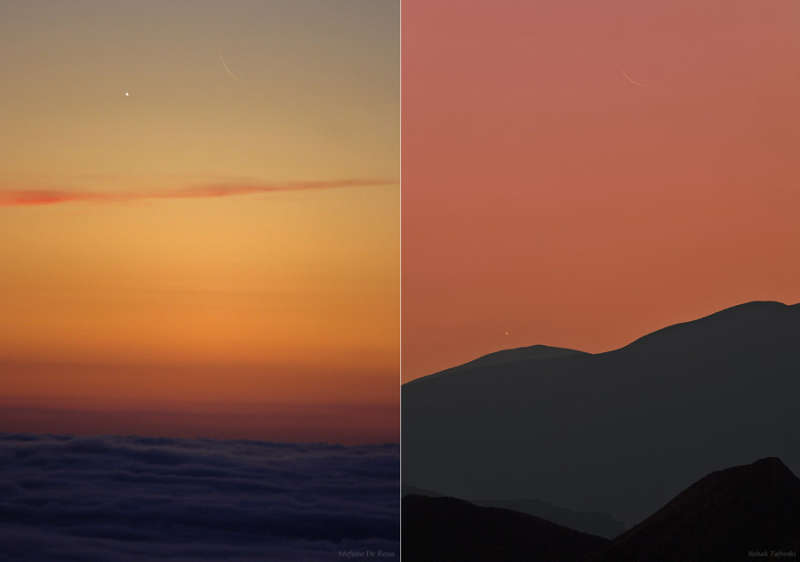Explanation: Venus rose in a glowing dawn sky on November 5th, just before the Sun. For early morning risers, its brilliant crescent phase was best appreciated with binoculars or a small telescope. On that day the crescent Venus also appeared in close conjunction with another lovely crescent that hugs the eastern horizon in planet Earth's morning skies, the waning crescent Moon. The celestial photo-op is captured here from two locations. Left, separated by less than a degree, the two crescents hover above a sea of clouds. The picture was recorded from an Alpine mountain pass not far from Turin, Italy. On the right is a sharp telephoto view taken before an earlier sunrise, farther east in the Alborz Mountains of Iran. In steady skies the slender Moon is still sliding toward Venus, the bright planet's compact crescent just clearing the mountainous horizon. For now, the crescent phase of Venus remains easy to enjoy with binoculars in November's dawn skies. The first observations of the phases of Venus, made by Galileo with his telescope in 1610, agreed with the predictions of the heliocentric Copernican model of the Solar System.
1999 2000 2001 2002 2003 2004 2005 2006 2007 2008 2009 2010 2011 2012 2013 2014 2015 2016 2017 2018 2019 2020 2021 2022 2023 2024 2025 |
Yanvar' Fevral' Mart Aprel' Mai Iyun' Iyul' Avgust Sentyabr' Oktyabr' Noyabr' Dekabr' |
NASA Web Site Statements, Warnings, and Disclaimers
NASA Official: Jay Norris. Specific rights apply.
A service of: LHEA at NASA / GSFC
& Michigan Tech. U.
|
Publikacii s klyuchevymi slovami:
Moon - Venus - crescent - conjunction - Luna - Venera - polumesyac - Soedinenie planet
Publikacii so slovami: Moon - Venus - crescent - conjunction - Luna - Venera - polumesyac - Soedinenie planet | |
Sm. takzhe:
Vse publikacii na tu zhe temu >> | |
